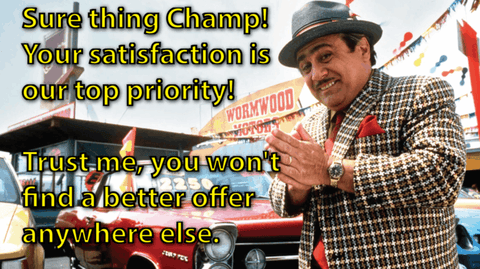In the world of baseball and softball, the practice of bat rolling has become a hot topic, with enthusiasts claiming various benefits for the process. However, it's crucial to shed light on what some consider the two most significant scams in the bat rolling industry.
- The Myth of Bat Rolling Alloy Bats:
One prevalent belief in the bat rolling community is that rolling alloy, metal, or aluminum bats enhances their performance, durability, and distance. However, it's time to set the record straight. As a professional bat roller, my commitment to integrity trumps the temptation of financial gain.
Alloy bats, particularly aluminum ones, maintain their best performance straight out of the wrapper until the alloy succumbs to dents and breaks down over time. Despite this well-established fact, certain companies misleadingly claim that rolling aluminum bats can prevent dents and improve performance. This is not only deceptive but also a disservice to the players relying the "professional" for accurate information.

To identify those with genuine concern for customers, we've compiled a shortlist of reputable companies that refuse to sell or roll alloy bats: BigDawg Bats, The Bat Doc, and Gorilla Bats. That means all other companies are selling rolled metal bats and swindling their customers. If they are using a compression tester, they are knowingly cheating them (which all of them use). The compression test number of an alloy bat will not change even with a standard roll, a heat roll, or a super roll (although compression numbers can be manipulated in pictures and videos). Bat rolling an aluminum bat will not increase the trampoline effect, not increase exit velocities and not increase the bat's durability as some would have you believe.
It's essential for players and enthusiasts to be aware of the truth and make informed decisions when it comes to the purported benefits of rolling alloy bats. Don't fall victim to what could be the biggest money-grabbing scam in the bat rolling industry.

- Heat Rolling: Separating Fact from Fiction:
Another contentious issue within the bat rolling landscape is the marketing tactic of heat rolling. Some claim it to be a revolutionary technique, while others dismiss it entirely. The reality lies somewhere in between.
Acknowledging the potential benefits of heat rolling, it's essential to dispel the notion that it's a one-size-fits-all solution. I began heat rolling bats in 2011, experimenting with temperature to address issues with outer shell cracking in certain slow-pitch bats. However, not all bats are suited for this method, as some may experience detrimental effects such as cracking, paint damage, or no change in compression for certain composite bats.
It's a nuanced process that requires a tailored approach, considering factors like bat type and material. Heated bat rolling is not a magical solution; rather, it's a tool that, when used selectively, can enhance the break-in process for specific bats.  To maximize the potential of breaking in bats, it's essential to acknowledge that other break-in strategies play a crucial role in achieving optimal performance. While heated bat rolling, can contribute to the process, a comprehensive approach ensures that each bat reaches its fullest potential.
To maximize the potential of breaking in bats, it's essential to acknowledge that other break-in strategies play a crucial role in achieving optimal performance. While heated bat rolling, can contribute to the process, a comprehensive approach ensures that each bat reaches its fullest potential.
In conclusion, as consumers and players navigate the bat rolling market, it's crucial to stay informed and skeptical of exaggerated claims. The key lies in understanding the nuances of each technique and recognizing that integrity should be at the forefront of every company's practices. By debunking these prevalent myths, we aim to empower players to make well-informed choices for their equipment needs.